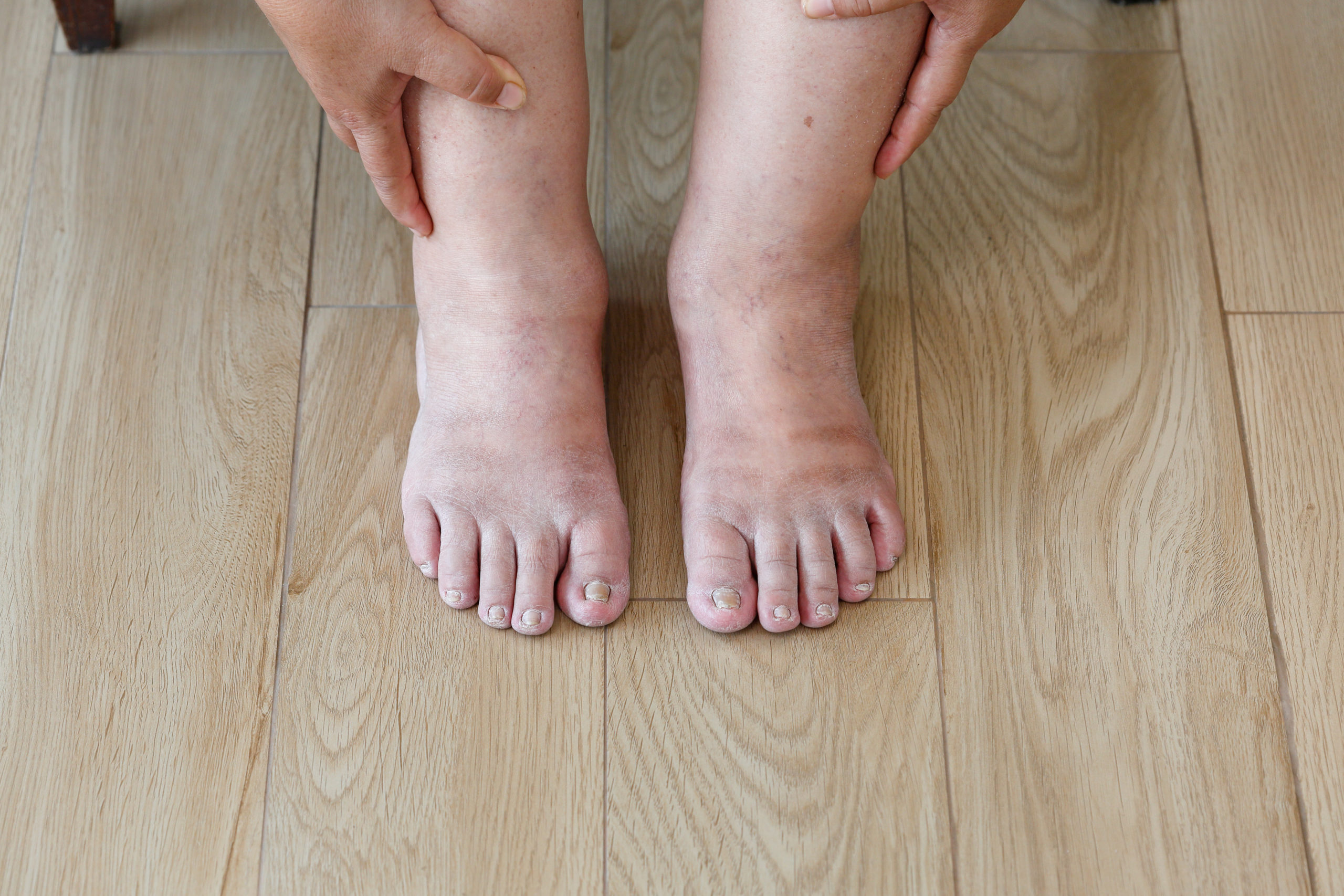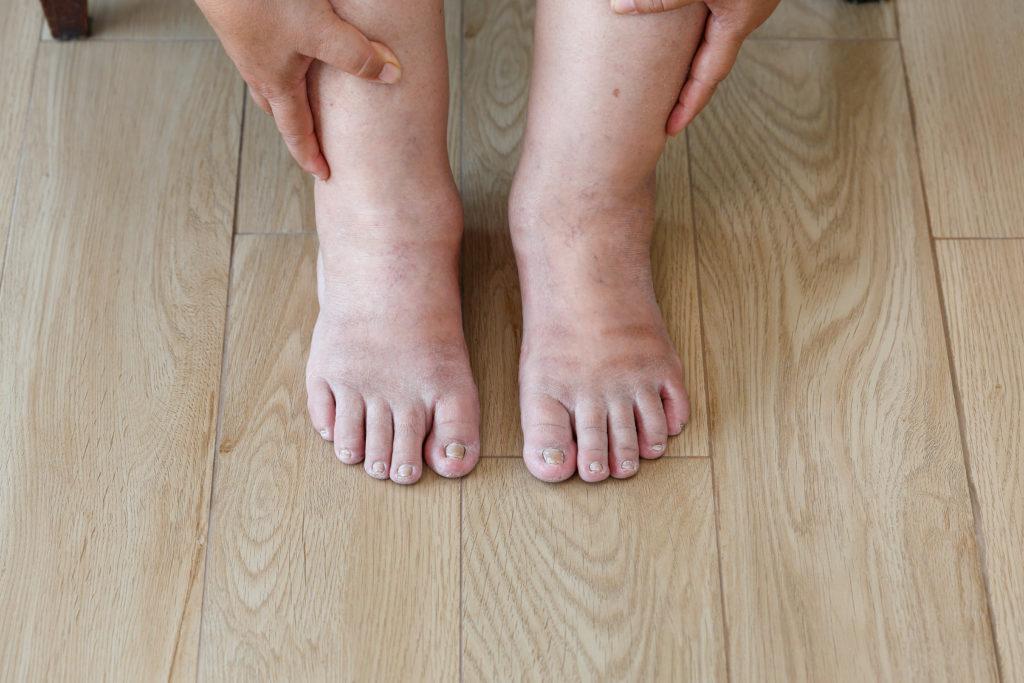
Do you have swollen feet or ankles after you’ve been sitting, standing or walking in a hot environment? You’re not alone. Medically known as heat oedema, this uncomfortable swelling generally occurs because the heat from your environment causes your blood vessels to naturally expand (dilate). As they do, fluid can leak into the surrounding tissues. Pair this with gravity encouraging the passage of larger volumes of fluid down into the legs, and you’ve got swollen feet, ankles and even legs.
As with anything, there are a number of extra risk factors that can make you more vulnerable to this swelling, so today, the podiatrists at My FootDr have shared what these are, what you can do to help prevent the swelling before it starts, and how to best manage the swelling if it’s already here.

Why Do My Feet Swell While Others Don’t?
There are a number of individual risk factors that make a person more susceptible to their feet swelling in the heat. These include:
- Salt retention in the body – when our body retains more salts, or loses it as a slower-than-normal rate, fluid is drawn into the tissues to cause swelling. The legs and feet are a common site for this. Having too much salt in the diet is a common cause.
- Venous insufficiency – when our veins are problematic and struggle to carry blood back to the heart against gravity, the fluid can be retained in our feet and legs
- Sitting or standing still for long periods – when we move our feet and legs, it helps our circulation and moves fluids around the body, and from our lower limbs. If we are still for long periods, the body works harder to pump our blood against gravity.
- Older adults – older adults have an increased risk of heat swelling due to natural changes to the heart and circulatory system from the ageing process
- Medical conditions – diseases and conditions affecting our circulation can make a person more vulnerable to swelling in the legs
- Being pregnant – when you’re pregnant, your fluid volume can increase by 20-80%, more weight is retained, and movement tends to decrease in the third trimester. This forces the circulatory system to work harder, and it can’t always keep up. This is why swelling in the feet is a common experience in pregnancy
Preventing Heat-Induced Swelling
There are a number of simple ways to help prevent heat swelling before it starts, as well as manage it once it has started. You can try:
- Elevating your feet – as gravity often plays a role in decreasing the efficiency of fluids moving up from the legs, help your body by elevating your legs regularly. Aim for 3-4 times per day and make sure your feet and legs are above the level of your heart. Lying down is the easiest way to achieve this. When sitting, use a footrest with a cushion where possible
- Staying active, keeping moving – exercise gets your feet and legs moving, and your heart and circulation going strong. The more the heart is pumping blood around the body, the better your body will help reduce the swelling
- Avoiding hot environments where possible – while it’s not always possible to avoid our extreme summer heat here in Australia, try to avoid long and excessively hot baths, hot showers and saunas
- Staying hydrated – keeping your water intake high may seem counterintuitive, but keeping well hydrated will help demote swelling. This is as when your water intake is low, the salt concentration in your blood can increase, causing you to retain more of the water that you do drink
- Watching your salt intake from your diet – like the above, when you have a high salt intake, the salt concentration in your body increases, encouraging water retention and swelling
How To Manage Foot And Ankle Swelling Once It Has Started
If you’re already suffering the effects of hot, swollen feet and legs, an effective way to help manage and prevent your swelling and related symptoms is by using medical-grade compression stockings. These work to help promote vein function, thereby preventing blood from pooling in the legs and supporting the transport of blood back up to your heart. This means that your swelling reduces and you’ll feel less discomfort and heaviness in your legs.
We have a number of compression garments available both in our clinics and on our online store – see them here.
Watch Your Shoes
If your feet are swollen, make sure your shoes aren’t going to be too tight – this can result in blisters, ingrown toenails, corns, callus, and general foot pain and discomfort. We recommend wearing an adjustable, orthotic-friendly and open-toed sandal in these circumstances, just like these. We have a number of shoe options to give the most comfort for feet that have a tendency to swell, and have shoe-fitting experts available at a number of our clinics to help you select the best fit and style for your feet.
Ready To Feel Great On Your Feet?
Our podiatry team is ready when you are! As the largest podiatry provider in Australia, we’re proud to be your trusted local podiatry providers, committed to delivering exceptional service, every time.
Book your appointment with us online here or call us on 1800 FOOT DR.


